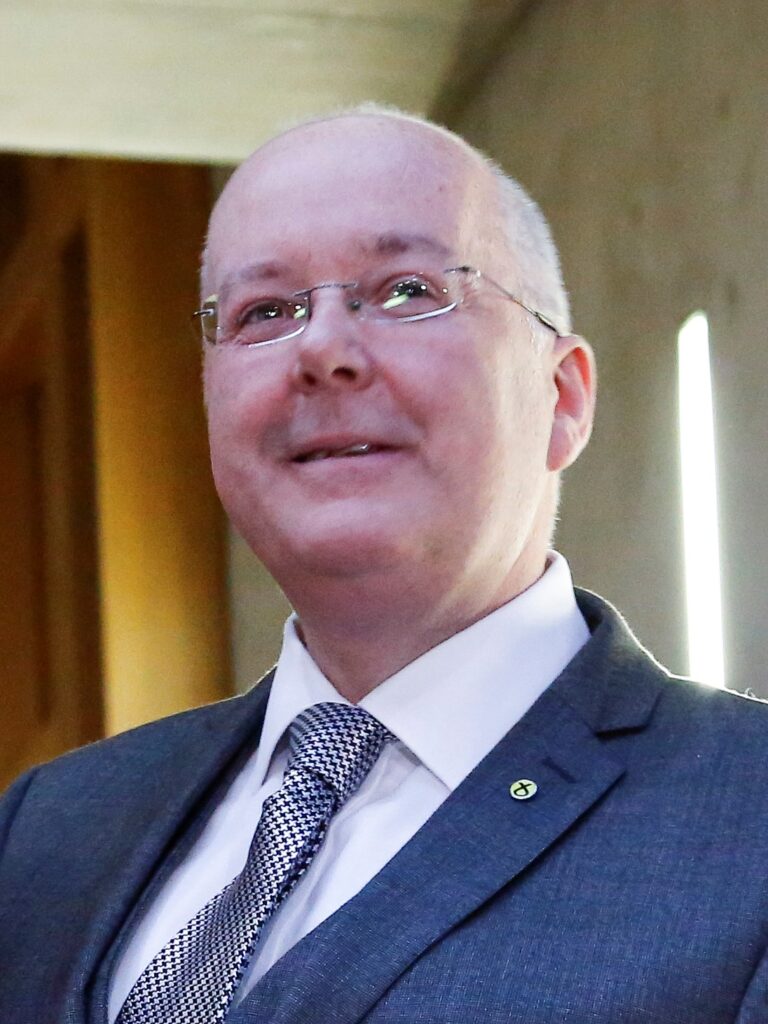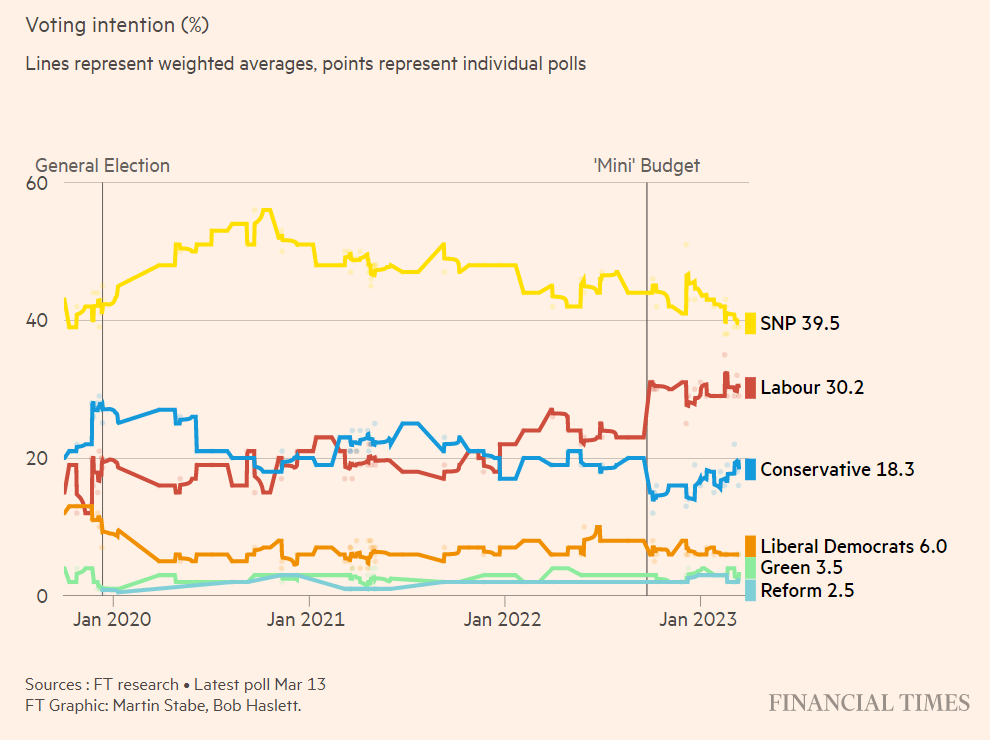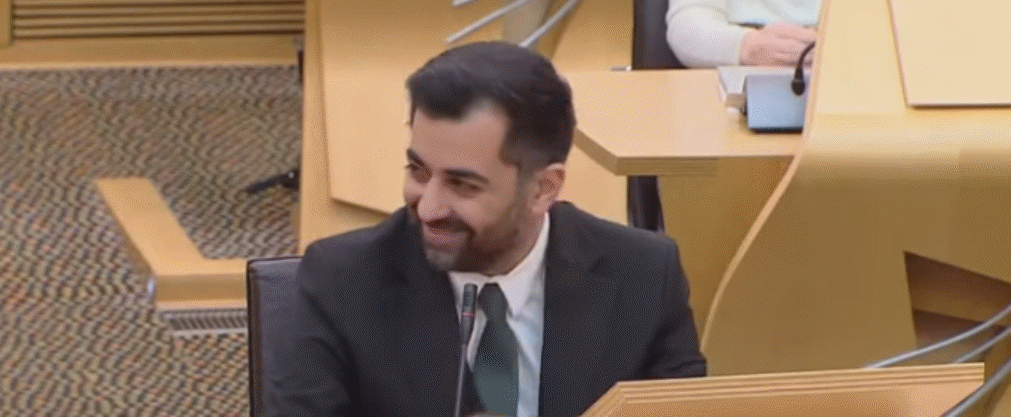By David Cartwright, Glasgow Anniesland Labour Party member and Gray Allan, Falkirk Labour Party member
Six weeks ago the Scottish National Party (SNP), the Scottish Government and the SNP Group at Westminster were thrown into disarray by Nicola Sturgeon’s unexpected announcement of her resignation as Leader of the SNP and as First Minister of Scotland. After an intense period of bitter debate and turmoil, played out in full public view, Humza Yousaf has now been selected by the SNP membership as her successor.
The election of the new SNP leader was very close. The election was by single transferable vote with none of the three candidates, Kate Forbes, Ash Regan or Humza Yousaf getting over 50% in the first round. Yousaf got 48.2% compared to his closest rival Kate Forbes the Finance Secretary with 40.8%. The candidate in third place, Ash Regan, former Community Safety Minister, was eliminated and her second preference votes reallocated. This led to Yousaf winning on 52% with 26,032 votes compared to 23,890 for Forbes.
Humza Yousaf, the new SNP leader
Yousaf is the first Scot of Asian descent to be First Minister. His parents arrived in Scotland in the 1960’s. He was educated in a private school in Glasgow, Hutchesons’ Grammar School. His paternal grandfather worked in the Singer factory in Clydebank while his grandmother was a “clippie” or conductress on the Glasgow Corporation buses.
Much has been said and written about the reasons for Sturgeon’s resignation. But it was clear that she was politically running out of steam. The UK Tory Government’s refusal to allow a second independence referendum and the failure of the legal challenge in the Supreme Court left her, and the SNP, without a strategy. All Sturgeon had was a proposal to use the next UK general election as a “de facto” referendum. Were the pro-independence parties to win a majority that would be taken as a mandate to negotiate on Scotland’s independence from the UK. It was not a popular idea and was fraught with risks for the nationalists. It potentially set the need to get rid of the Tory Government immediately against a desire for independence in the longer term.
A bitter leadership election
The leadership election has been a bitter affair. It all got off to a bad start when, at the first televised hustings, Forbes attacked Yousaf over his record as a Minister. “You were a transport minister and the trains were never on time, when you were justice secretary the police were stretched to breaking point, and now as health minister we’ve got record high waiting times“. That’s a pretty damning indictment from a fellow Cabinet member.
Another major split was over the Gender Recognition Reform Bill, now blocked by the UK Government. Both Regan and Forbes opposed the Bill with Ash Regan, MSP for Edinburgh East, resigning her government position in protest in the period before Sturgeon’s resignation. Kate Forbes, MSP for Skye, Lochaber & Badenoch and member of the Free Church of Scotland also declared that she would not challenge the UK Government over the blocking of the GRR Bill.
Yousaf was billed as the ‘continuity’ candidate because of his perceived closeness to the programme of Nicola Sturgeon and his alignment with the so-called ‘social democratic’ wing of the party. His election will also keep the Greens in Government because they might have withdrawn if Kate Forbes or the other candidate, Ash Regan had won. We can expect ‘more of the same’ from the SNP under Yousaf but the party has done a lot of self-harm in the meantime.
Casualties in the SNP party machine
This last six weeks has also seen multiple casualties in the party organisation of the SNP. First to go was Murray Foote, the SNP media chief who said he had acted in good faith when he called a journalist’s claim of 30,000 people leaving the SNP as “drivel”. Subsequently it was revealed that the SNP membership had indeed dropped from 104,000 in 2021 to 72,186 in February this year. The SNP’s National Executive blamed the Chief Executive, Peter Murrell for what had happened with the membership numbers and he subsequently resigned as well.

Peter Murrell who resigned as SNP Chief Executive over the issue of membership numbers. Image by Scottish Government
Peter Murrell had been Chief Executive since 1999 and married Nicola Sturgeon in 2010. He is currently being investigated about a private loan he made to the SNP of £107,620 in June 2021 when the party was having financial difficulties. And there is also the ongoing police investigation into allegations of fraud in relation to the possible misappropriation of £600,000 of donations initially ‘ring fenced’ for a future Indyref2.
All three candidates for the leadership promised changes to the structure and regime of the Scottish National Party, even Humza Yousaf who was supported by the Party establishment. Once hidden away but now exposed to the light of day the SNP is describes as a “top down” organisation with tight control of branches and members. Branches complain that election candidates are imposed on them with no room for local decision making. Motions to Annual Conference are vetted by Party HQ and are excluded from the agenda if they reveal disagreements with the Party line. Any changes here will reveal internal disagreement and disputes so far hidden from view.
The clash between the three candidates
The three leadership candidates have all claimed to stand for different things, making the usual call for ‘change’ just like the succession of Tory leaders at Westminster who have also said they represented change – change from the policies of the very same Government they’ve been part of for years! Some political commentators have stressed the difference between Yousaf and Forbes as one between a “left of centre, social democratic type” and a ‘pro-business conservative with a small ‘c’”. But on the issue of the economy there is nothing fundamentally different between them.
There is nothing particularly radical about the SNP. For example, when they had a chance to nationalise the railway in 2015 they gave out another private franchise. They only nationalised it in 2022 when public support for such a policy was overwhelming.
Private companies are heavily involved in many of the Scottish Government’s flagship projects. Less than a month ago, NatureScot, Scotland’s nature agency, signed a partnership deal worth £2 billion with three private partners for native woodland restoration. The companies are the UK private bank Hampden & Co, investment manager Lombard Odier and impact investment firm Palladium. Campaigners have said that using Scottish woodlands as an opportunity for companies to buy carbon offsets is ‘greenwashing’. The irony is that the Minister who signed the deal, Lorna Slater, is one of the Greens in the Government.
Independence is the question that keeps them together
Some of the reactions to Yousaf’s appointment reflect similar comments about Nicola Sturgeon when she announced her resignation ie a failure to deliver on day to day issues. But that is not surprising given the main thing that motivates them is the independence cause. Angus MacNeil, an SNP MP admitted there would be short-term damage to the party but claimed its popularity would be sustained by the hunger of many Scots to leave the union. “Support for the SNP is about that desire for independence, rather than belief in the particular brilliance of the SNP,” he said.
The divisions in the SNP have show that there are still people in the SNP who are very much on the right like in its early days when they were considered to be ‘Tartan Tories’. Kate Forbes belongs to the more traditional and conservative wing of the SNP. This wing of the SNP, with its roots in the Highlands and rural areas of Scotland, were dominant in the SNP until Alex Salmond and “79 Group” activists succeeded in turning the SNP towards the urban centres and the Scottish working class. The right wing has been acquiescent since then on the back of the clear electoral success of the ‘left-turn’ strategy. However, there are internal tensions, which Nicola Sturgeon was able to contain, using the independence campaign to keep all factions in line.
They all believe in independence as a way forward. In his acceptance speech, Yousaf stressed the need to address the cost of living crisis, to support struggling families and to deal with ongoing problems in the NHS. He even referenced Labour Leader John Smith’s quote that it was a privilege to serve your country. He mentioned the independence campaign almost in passing! Yet the independence question is what the SNP is all about and it’s what keeps the fragile alliance together. At the first televised leadership debate Yousaf said “Under my leadership, every single election we fight will be fought on the issue of independence, including the next general election”. This is a true statement of his priorities.
Can Labour make a comeback in Scotland?

The turmoil in the SNP will provide an opportunity for Labour to make a comeback in Scotland. Already in the past two years, support for Labour has risen while support for the SNP has reduced. As at 13 March the FT poll tracker showed the SNP on 39.5% and Labour on 30.2%. But a continuous trend in this direction will not be automatic. In the same way that dissatisfaction with the Tories in the UK as a whole will not automatically by itself encourage people back to Labour.
There has to be a clear alternative and that needs to be socialist policies at a UK and Scotland level for wages, rent controls, house building and so on. Labour should be proposing a major programme of investment that improves living standards while reducing the impact of the economy on climate change. This programme needs to be enabled by nationalisation of key sectors of the economy like transport, energy and the banks. This sort of programme would provide an attractive alternative to that of the SNP which is just the promise of the same failing capitalist system we have today but governed in a ‘kinder’ way within a smaller national boundary.



